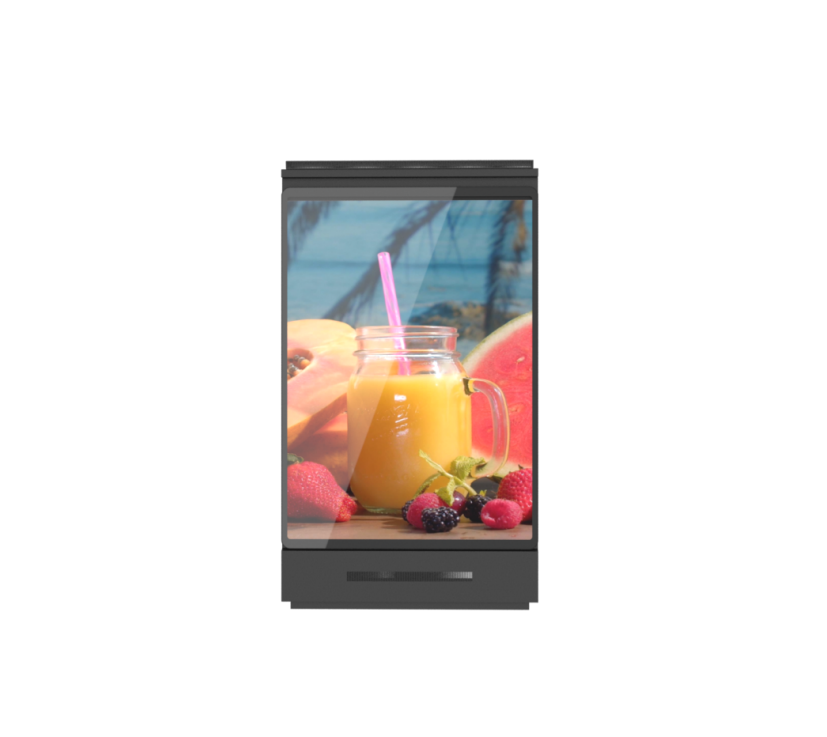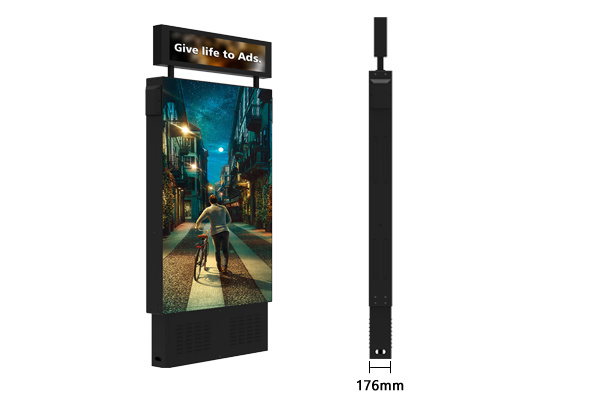Digital LED street furniture: redefining urban space with smart technology
2024-05-10 14:43
With the emergence of digital technologies, the landscape of urban spaces is constantly evolving. One of the most important advancements in this area is the integration of digital LED street furniture. These innovative solutions are changing the way we interact with public spaces, offering a blend of functionality, aesthetics and technology.

Key features of digital LED street furniture:
HIGH QUALITY DISPLAY: Digital LED street furniture features state-of-the-art LED screens that provide superior image quality and clarity. These displays ensure that information and visuals are vividly depicted, capturing the attention of pedestrians and passers-by.
Connectivity and interactivity: Digital LED street furniture can be connected to various networks, enabling real-time updates and interactive content. This allows for dynamic and engaging experiences that enhance overall interaction with the urban environment.
Weather Resistance: Digital LED street furniture is designed with weather-resistant materials to withstand harsh outdoor conditions. This ensures durability and reliability, making it suitable for all types of weather conditions.
Energy efficiency: Digital LED street furniture is designed with energy-saving technology to reduce power consumption and operating costs. This is in line with global initiatives for sustainable and eco-friendly urban development.
Advantages of digital LED street furniture:
Enhance public space engagement: By incorporating interactive and visually engaging elements, digital LED street furniture encourages public engagement. It creates a sense of community and connection, making urban spaces more vibrant and attractive.

Effective communication medium: Digital LED street furniture provides an effective communication platform for various stakeholders including city authorities, advertisers and local businesses. It delivers information, promotions and public service announcements in a visually appealing way.
Revenue generation: Digital LED street furniture can display advertising and promotional content, providing a valuable revenue stream for city councils and city planners. This helps offset maintenance costs and contributes to the overall development of the public space.
Improved safety and navigation: Digital LED street furniture enhances safety and navigation in urban areas by providing real-time information and wayfinding solutions. Pedestrians can access maps, routes and public transit updates to make their journeys more convenient and safer.
Applications of digital LED street furniture:
Public transportation: Digital LED street furniture is commonly found in bus shelters, train stations, and other public transportation hubs. It provides passengers with real-time timetables, route information and travel alerts, enhancing their overall commuting experience.
Town squares and public spaces: In town squares and public gathering spaces, digital LED street furniture serves as a dynamic platform for showcasing local art, cultural events and community announcements. It adds modernity and energy to these spaces.
Shopping malls and retail areas: In commercial areas, digital LED street furniture is used to advertise and display
promotional offers. It attracts shoppers' attention, increases foot traffic and increases sales for retailers.
Outdoor events and festivals: Digital LED street furniture is a valuable asset for outdoor events and festivals. It can display event schedules, sponsor information and interactive elements to create an immersive experience for attendees.
Digital LED street furniture is redefining urban landscapes, infusing public spaces with smart technology and vibrant displays. Its engagement, communication and revenue-generating capabilities make it a valuable addition to modern cities. As we continue to embrace digital advancements, the integration of digital LED street furniture will play a key role in shaping the future of urban spaces, promoting connectivity and improving the overall quality of life in cities.
Recommended News
Contact
Office : +86 0755-89341658
Mobile:+86-13924593446
Contact: Echo
Feedback

























